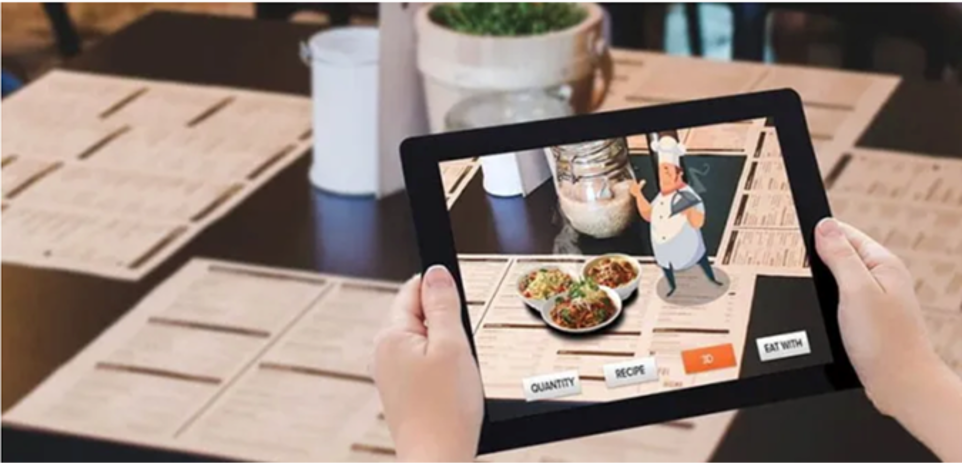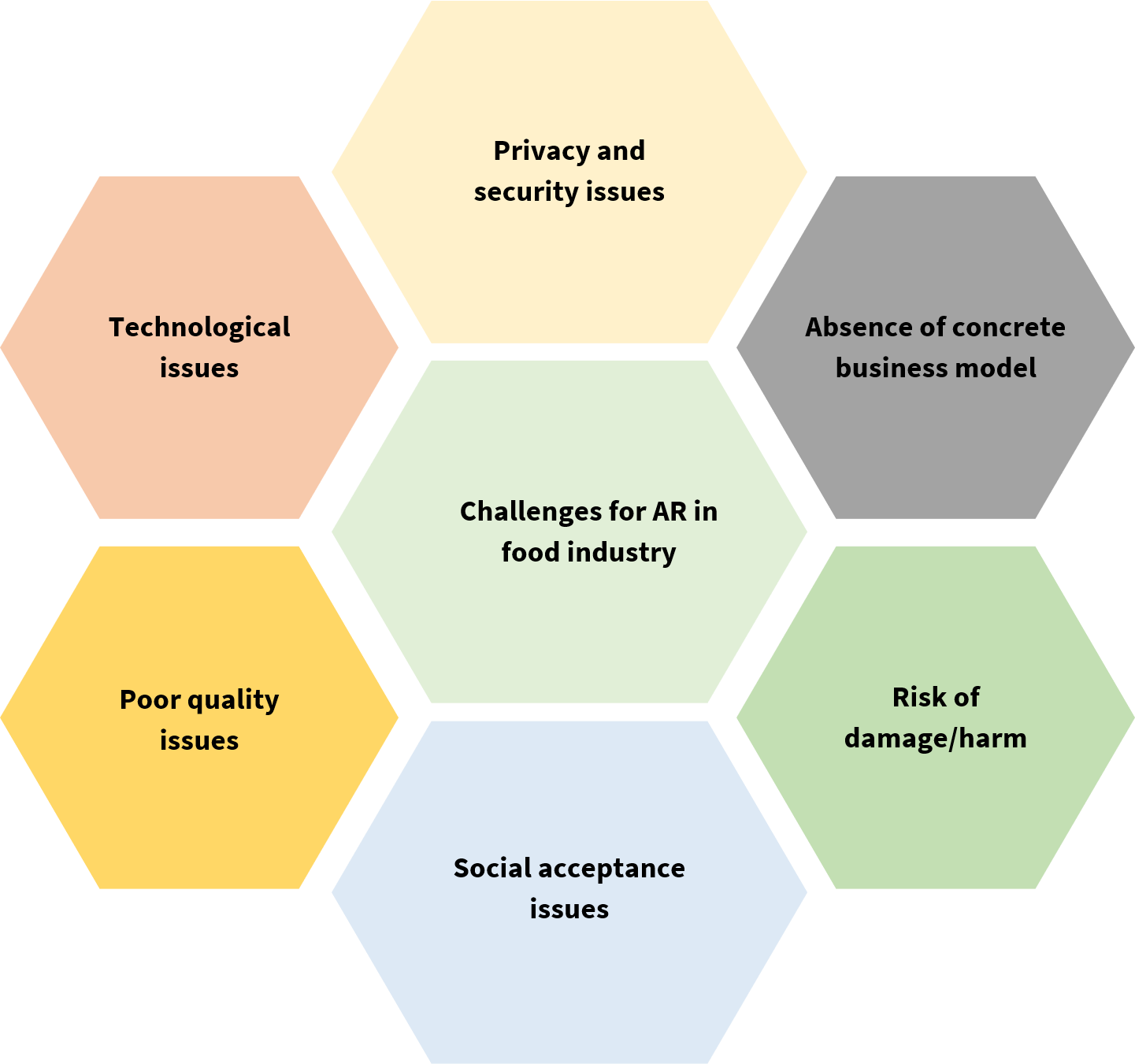INTRODUCTION
- Augmented Reality (AR) is the use of information in the form of text, visuals, music, and other virtual modifications that are combined with real-world things in real-time.
- It is the “real world” component that distinguishes AR from virtual Reality.
- In contrast to a simulation, AR incorporates and lends value to the user’s engagement with the real environment.

Figure 1: Augmented Reality has gained attention in recent years
- Augmented Reality is a live technology implemented in the real-world environment, which is generated by sensors from the Internet of Things.
- AR can transform numerous parts of the food industry.
- Food industries increasingly use Augmented Reality to serve new experiences to customers. The experiences include delicious food, information, and engagement between customers and restaurants from the technologies.
Advantages
- Improves employee safety and efficiency by giving real-time information and updates.
- Improves efficiency in logistics by helping the logistics person with real-time updates of counts, destinations and more.
- Enhances new product development by being involved in the analysis of ingredients, food structure, sensory perceptions, etc.
- AR as a marketing tool to improve customer interaction and engagement through packaging and various other stimulants
Disadvantages
- Privacy and Security – cyber security-based challenges involve implementation in the food industry.
- Absence of new or improved business model specific to the food industry.
- Social acceptance of any new technology will take time. This phenomenon is also applicable to AR.
- Technological issues – all the existing devices may not be acceptable for setting up an AR software [1].

Figure 2: Challenges of Augumented Reality
Application in food industry:
Augmented Reality Menu for Restaurants
- AR technology is useful for customers sensitive to certain food ingredients and those who want to manage their weight.
- Customers can use the Internet of Things to scan the menu to get more information about the products in 3D visuals. AR delivers visual information about each food product, such as ingredients, nutrition facts, and calories.
- This technology benefits both restaurants and customers who want to decrease the risk of allergic reactions and keep a watch on their caloric intake.
AR for Food Packaging
- Augmented Reality can provide additional information like product history and even games on the product packaging.
- Providing such interesting information helps create brand awareness and customer engagement and boost marketing strategies.
Improved Training of New Employees
- Augmented Reality can provide an immersive training experience for employees who want to master their skills.
- Companies that used AR-based training experienced more than 70% employee retention even a year following training [2].





